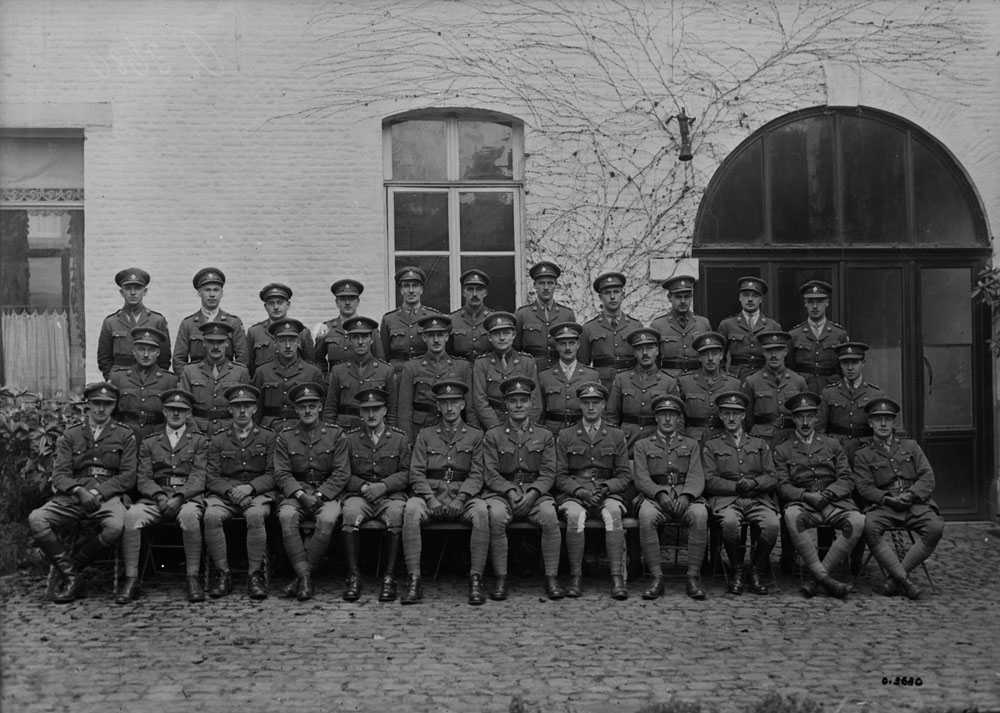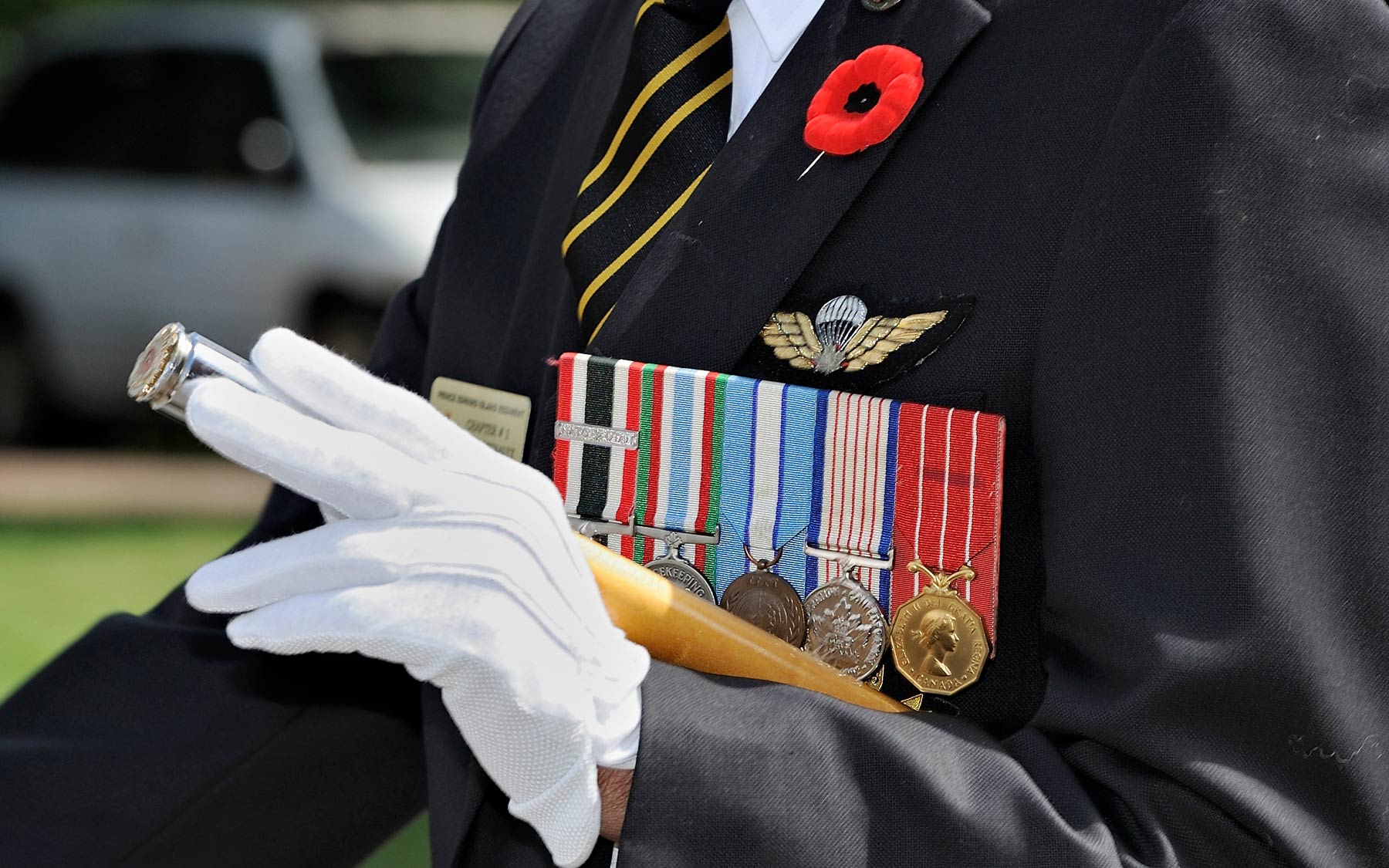Browse "Organizations and Regiments"
-
Article
National War Labour Board
The National War Labour Board was established in 1941 with 5 regional boards to enforce the Canadian government's program of wage stabilization in the volatile wartime economy. The first chairman was Humphrey MITCHELL, later minister of labour.
"https://development.thecanadianencyclopedia.ca/images/tce_placeholder.jpg?v=e9dca980c9bdb3aa11e832e7ea94f5d9" // resources/views/front/categories/view.blade.php
https://development.thecanadianencyclopedia.ca/images/tce_placeholder.jpg?v=e9dca980c9bdb3aa11e832e7ea94f5d9
-
Article
Navy League of Canada
The Navy League of Canada is a volunteer organization founded in 1918 under federal charter, but tracing its origins to branches of the British Empire Navy League established in Canada from 1895.
"https://development.thecanadianencyclopedia.ca/images/tce_placeholder.jpg?v=e9dca980c9bdb3aa11e832e7ea94f5d9" // resources/views/front/categories/view.blade.php
https://development.thecanadianencyclopedia.ca/images/tce_placeholder.jpg?v=e9dca980c9bdb3aa11e832e7ea94f5d9
-
Article
No. 8 Company – Canadian Forestry Corps
No. 8 Company, Canadian Forestry Corps (CFC) was the second Black unit formed in the First World War, after No. 2 Construction Battalion. From November 1918 to March 1919, No. 8 Company improved and repaired airfields and roads in northern Belgium and Germany, providing valuable support to the Royal Air Force (RAF).
"https://d2ttikhf7xbzbs.cloudfront.net/No8CompanyCFC/No8-Co-CFC_WarDiary_Dec1918.jpg" // resources/views/front/categories/view.blade.php
https://d2ttikhf7xbzbs.cloudfront.net/No8CompanyCFC/No8-Co-CFC_WarDiary_Dec1918.jpg
-
Article
North Shore (New Brunswick) Regiment
The North Shore (NB) Regiment (NS(NB)R) is a bilingual, primary reserve infantry regiment of the Canadian Army. It is part of the 5th Canadian Division, 37th Canadian Brigade Group. The regimental headquarters is located in Bathurst, New Brunswick. Regimental battle honours include Passchendaele, Ypres 1917 and Hill 70 (First World War); the Normandy Landing and the Battle of the Scheldt (Second World War).
"https://d2ttikhf7xbzbs.cloudfront.net/media/new_article_images/NorthShoreRegt/NS(NB)R Badge.jpg" // resources/views/front/categories/view.blade.php
https://d2ttikhf7xbzbs.cloudfront.net/media/new_article_images/NorthShoreRegt/NS(NB)R Badge.jpgR Badge.jpg)
-
Article
Princess Patricia’s Canadian Light Infantry (PPCLI)
The Princess Patricia’s Canadian Light Infantry (PPCLI, also known as the Patricia's) is one of three permanent Regular Force infantry regiments of the Canadian Army. Its current structure consists of three battalions and a reserve battalion, for a total of 2,000 soldiers lodged at bases in Edmonton, Alberta, and Shilo, Manitoba. The regiment has a proud history of service, dating back to its creation in the First World War.
"https://d2ttikhf7xbzbs.cloudfront.net/media/media/ddc99988-d986-4d26-8073-eff1bfdbbfe7.jpg" // resources/views/front/categories/view.blade.php
https://d2ttikhf7xbzbs.cloudfront.net/media/media/ddc99988-d986-4d26-8073-eff1bfdbbfe7.jpg
-
Article
Princess Patricia's Canadian Light Infantry Band
The Princess Patricia's Canadian Light Infantry Band. Recruited in Toronto in 1919 under the direction of Capt Thomas William James and stationed in Winnipeg 1920-39.
"https://development.thecanadianencyclopedia.ca/images/tce_placeholder.jpg?v=e9dca980c9bdb3aa11e832e7ea94f5d9" // resources/views/front/categories/view.blade.php
https://development.thecanadianencyclopedia.ca/images/tce_placeholder.jpg?v=e9dca980c9bdb3aa11e832e7ea94f5d9
-
Article
Queen's Own Rifles of Canada Band
Queen's Own Rifles of Canada Band. One of Canada's oldest and most famous volunteer militia bands, formed in Toronto in 1862 under the direction of Adam Maul, an Englishman who had served in the imperial army. Its early directors included William Carey 1875-9 and John Bayley 1879-1901.
"https://development.thecanadianencyclopedia.ca/images/tce_placeholder.jpg?v=e9dca980c9bdb3aa11e832e7ea94f5d9" // resources/views/front/categories/view.blade.php
https://development.thecanadianencyclopedia.ca/images/tce_placeholder.jpg?v=e9dca980c9bdb3aa11e832e7ea94f5d9
-
Article
RCAF Blackouts
RCAF Blackouts. Entertainment troupe, one of several organized during World War II by air force personnel.
"https://development.thecanadianencyclopedia.ca/images/tce_placeholder.jpg?v=e9dca980c9bdb3aa11e832e7ea94f5d9" // resources/views/front/categories/view.blade.php
https://development.thecanadianencyclopedia.ca/images/tce_placeholder.jpg?v=e9dca980c9bdb3aa11e832e7ea94f5d9
-
Article
Regiment
A regiment is a body of troops composed of squadrons, batteries or companies; it is often divided into battalions for military operations. A single-battalion regiment ranges in size from 300 to 1,000.
"https://d2ttikhf7xbzbs.cloudfront.net/CAF/RCR_1907.jpg" // resources/views/front/categories/view.blade.php
https://d2ttikhf7xbzbs.cloudfront.net/CAF/RCR_1907.jpg
-
Article
Remembering D-Day: The Making of a Heritage Minute
On 6 June 1944, Canadian Forces landed on Juno Beach. D-Day was the largest amphibious invasion of all time and marked the beginning of the end of the Second World War. In 2019, Historica Canada released a Heritage Minute telling the story of 47-year-old Major Archie MacNaughton, a First World War veteran and leader of the North Shore New Brunswick Regiment’s A Company. In this article, Anthony Wilson-Smith, president of Historica Canada, reflects on the making of the D-Day Minute.
"https://d2ttikhf7xbzbs.cloudfront.net/media/new_article_images/ArchieMacNaughton/IMG_2847.JPG" // resources/views/front/categories/view.blade.php
https://d2ttikhf7xbzbs.cloudfront.net/media/new_article_images/ArchieMacNaughton/IMG_2847.JPG -
Article
Royal Canadian Legion
The Royal Canadian Legion is a non-profit, national organization that serves Canadian war veterans and their families and lobbies government on their behalf. It is best known for selling poppies every fall and organizing Remembrance Day ceremonies across the country. In recent decades, the Legion has struggled with declining membership, due in large part to the loss of Second World War and Korean War veterans.
"https://d2ttikhf7xbzbs.cloudfront.net/media/media/c8863b07-985b-49e7-aa96-3ee336735d4d.jpg" // resources/views/front/categories/view.blade.php
https://d2ttikhf7xbzbs.cloudfront.net/media/media/c8863b07-985b-49e7-aa96-3ee336735d4d.jpg
-
Article
Royal Canadian Naval Air Branch
The Royal Canadian Naval Air Branch was established in 1945 and disbanded upon unification of the Canadian Armed Forces in 1968. During that period, the Royal Canadian Navy (RCN) operated a succession of three aircraft carriers: HMC Ships Warrior, Magnificent and Bonaventure. The ability to exercise air power at sea was fundamental to the RCN’s core role of anti-submarine warfare (ASW) against the Cold War Soviet submarine fleet. As the nature of that threat evolved, the RCN Air Branch underwent a nearly continuous process of adaptation to incorporate new equipment and tactics, with increasingly higher performance aircraft and supporting equipment.
"https://d2ttikhf7xbzbs.cloudfront.net/RCNAirBranch/Bonaventure_-_Banshees.jpg" // resources/views/front/categories/view.blade.php
https://d2ttikhf7xbzbs.cloudfront.net/RCNAirBranch/Bonaventure_-_Banshees.jpg
-
Article
Royal Canadian Naval Air Service (RCNAS)
The Royal Canadian Naval Air Service (RCNAS) was formed during the closing months of the First World War to help counter the German U-boat threat on Canada’s East Coast. It was disbanded after only three months of existence. A Canadian naval air service was not created again until after the Second World War.
"https://d2ttikhf7xbzbs.cloudfront.net/RCNAS/HS-2L-1876.jpg" // resources/views/front/categories/view.blade.php
https://d2ttikhf7xbzbs.cloudfront.net/RCNAS/HS-2L-1876.jpg
-
Article
Royal Canadian Regiment
The Royal Canadian Regiment (RCR) is one of three permanent, regular army infantry regiments of the Canadian Armed Forces. The regimental headquarters is in Petawawa, Ontario. Consisting of three battalions and a reserve battalion, the RCR has a proud history of military service dating back to 1863.
"https://d2ttikhf7xbzbs.cloudfront.net/RCR/RCR_Italy.jpg" // resources/views/front/categories/view.blade.php
https://d2ttikhf7xbzbs.cloudfront.net/RCR/RCR_Italy.jpg
-
Article
Royal Flying Corps
During the First World War, more than 5,000 Canadian pilots served in the Royal Flying Corps (RFC). The RFC was formed on 13 April 1912 to satisfy Britain's need for a military presence in the expanding field of aviation. It joined with the Royal Naval Air Service (RNAS) in April 1918 to become the Royal Air Force. During the war, an RFC/RAF training program in Canada produced approximately 10,500 pilots, mechanics and aircraftmen.
"https://d2ttikhf7xbzbs.cloudfront.net/BillyBishop/Bishop-Barker.jpg" // resources/views/front/categories/view.blade.php
https://d2ttikhf7xbzbs.cloudfront.net/BillyBishop/Bishop-Barker.jpg

